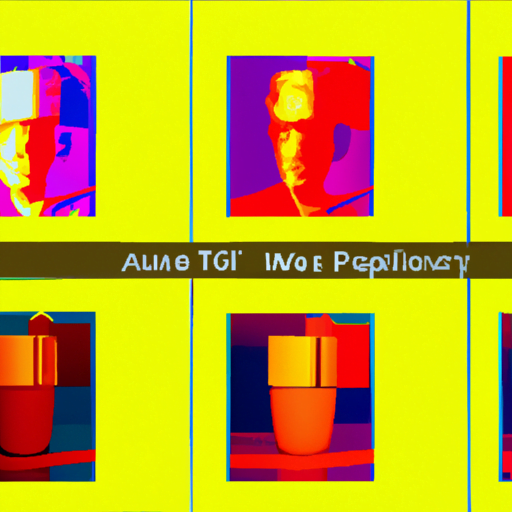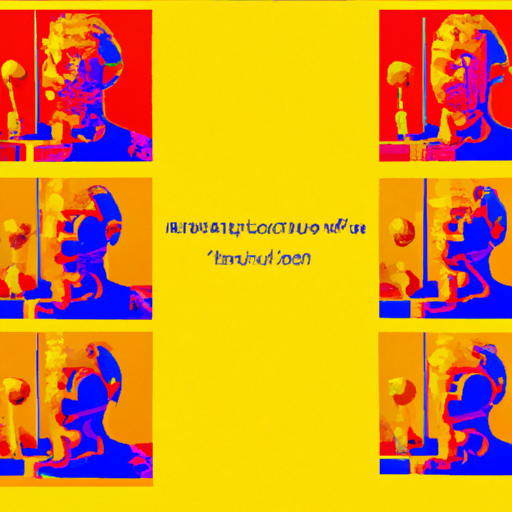
-
Table of Contents
- AI-Powered User Testing: Enhancing User-Centric Design
- The Role of User Testing in User-Centric Design
- The Rise of AI-Powered User Testing
- Applications of AI-Powered User Testing
- 1. Concept Testing
- 2. Usability Testing
- 3. A/B Testing
- 4. Voice and Conversational Interface Testing
- Real-World Examples
- 1. Netflix
- 2. Airbnb
- 3. Google
- Statistics on AI-Powered User Testing
- Conclusion
AI-Powered User Testing: Enhancing User-Centric Design

As technology continues to advance, businesses are increasingly recognizing the importance of user-centric design in creating successful products and services. User testing plays a crucial role in this process, allowing companies to gather valuable feedback and insights from their target audience. However, traditional user testing methods can be time-consuming, expensive, and often fail to capture the full range of user experiences. This is where AI-powered user testing comes into play, revolutionizing the way companies approach user-centric design. In this article, we will explore the benefits and applications of AI-powered user testing, backed by real-world examples and statistics.
The Role of User Testing in User-Centric Design
User testing involves observing and analyzing how users interact with a product or service to identify usability issues, gather feedback, and make informed design decisions. By involving real users in the testing process, companies can gain valuable insights into their target audience’s needs, preferences, and pain points. This information is then used to refine and improve the user experience, ultimately leading to higher customer satisfaction and increased business success.
Traditional user testing methods typically involve recruiting participants, setting up controlled environments, and conducting in-person or remote sessions. While these methods have proven effective, they often suffer from limitations such as small sample sizes, high costs, and time constraints. Additionally, traditional user testing may not fully capture the diversity of user experiences, as participants may feel self-conscious or behave differently in a testing environment.
The Rise of AI-Powered User Testing
AI-powered user testing leverages the capabilities of artificial intelligence and machine learning to overcome the limitations of traditional methods. By automating certain aspects of the testing process, AI-powered tools enable companies to gather larger sample sizes, reduce costs, and obtain more comprehensive insights into user behavior.
One of the key advantages of AI-powered user testing is its ability to collect and analyze data at scale. AI algorithms can process vast amounts of user data, including clickstreams, heatmaps, and eye-tracking information, to identify patterns and trends. This allows companies to gain a deeper understanding of how users interact with their products or services, uncover hidden usability issues, and make data-driven design decisions.
Applications of AI-Powered User Testing
AI-powered user testing can be applied to various stages of the design process, from initial concept development to post-launch optimization. Here are some key applications:
1. Concept Testing
Before investing significant resources into product development, companies can use AI-powered user testing to validate their concepts and gather early feedback. By presenting users with wireframes or prototypes, companies can assess user reactions, preferences, and expectations. AI algorithms can then analyze the feedback and provide insights to guide further design iterations.
2. Usability Testing
Usability testing is a critical component of user-centric design, ensuring that products or services are intuitive and easy to use. AI-powered tools can automate the process by tracking user interactions, identifying usability issues, and generating actionable recommendations. For example, AI algorithms can detect areas where users struggle or encounter errors, allowing designers to make targeted improvements.
3. A/B Testing
A/B testing involves comparing two or more versions of a design to determine which one performs better in terms of user engagement, conversions, or other key metrics. AI-powered user testing can streamline the A/B testing process by automatically generating and analyzing multiple design variations. This enables companies to quickly identify the most effective design elements and optimize their products or services accordingly.
4. Voice and Conversational Interface Testing
With the increasing popularity of voice assistants and chatbots, testing the user experience of voice and conversational interfaces is crucial. AI-powered user testing tools can simulate conversations and interactions with these interfaces, allowing companies to evaluate the effectiveness of their designs. By analyzing user responses and sentiment, AI algorithms can provide insights to improve the natural language processing capabilities and overall user experience.
Real-World Examples
Several companies have already embraced AI-powered user testing and reaped the benefits. Let’s explore a few real-world examples:
1. Netflix
Netflix, the popular streaming platform, uses AI-powered user testing to enhance its recommendation algorithm. By analyzing user behavior, viewing patterns, and preferences, Netflix’s AI algorithms can suggest personalized content recommendations to its users. This not only improves the user experience but also increases user engagement and retention.
2. Airbnb
Airbnb, the online marketplace for accommodations, utilizes AI-powered user testing to optimize its search and booking process. By analyzing user interactions and feedback, Airbnb’s AI algorithms can identify pain points and make recommendations for improving the user experience. This has resulted in higher conversion rates and increased customer satisfaction.
3. Google
Google, the search engine giant, employs AI-powered user testing to refine its search algorithms and user interface. By analyzing user queries, click-through rates, and other engagement metrics, Google’s AI algorithms can deliver more relevant search results and improve the overall search experience for its users.
Statistics on AI-Powered User Testing
The effectiveness of AI-powered user testing is supported by various statistics:
- According to a study by UserTesting, 70% of companies that use AI-powered user testing reported an increase in customer satisfaction.
- In a survey conducted by Adobe, 47% of UX professionals stated that AI-powered user testing helped them identify usability issues that traditional methods missed.
- Research by McKinsey & Company found that companies that extensively use AI-powered user testing are twice as likely to exceed their business goals compared to those that don’t.
Conclusion
AI-powered user testing is revolutionizing the field of user-centric design by enabling companies to gather comprehensive insights, improve usability, and enhance the overall user experience. By leveraging the capabilities of artificial intelligence and machine learning, businesses can overcome the limitations of traditional user testing methods and make data-driven design decisions. Real-world examples from companies like Netflix, Airbnb, and Google demonstrate the effectiveness of AI-powered user testing in driving customer satisfaction and business success. As technology continues to advance, AI-powered user testing will undoubtedly play an increasingly vital role in creating user-centric products and services.
